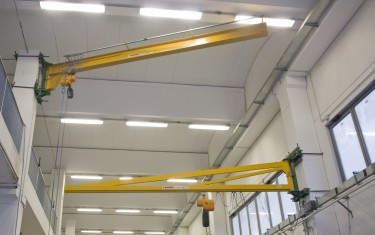
Jib cranes
Wide range of jib cranes with various configuration to meet every need of the customers
Elephant resolves all problems connected with moving and lifting in the industrial and artisan sectors.
All Elephant heavy lifting equipment are addressed to the industrial and artisan sector, in support of companies in the production and moving phases of even heavy loads, achieving answers to all specific requirements in a positive manner, be that with regard to capacity, or for the area to be covered by the movement.
Our lifting units are mainly used within warehouses and production areas, but they can also be installed externally after having undergone particular painting treatment, in order to guarantee complete resistance against atmospheric elements and agents.
In the last 30 years, attention to the potential risks to the health and safety of man has grown enormously due to manual handling of loads. The main risk factors were down to all those situations in which the load was too heavy to be lifted, too bulky or difficult to grasp, unstably balanced or only manageable with incorrect postures.
The various problems encountered over time, amongst which the gradual but definitive wear on the skeletal-muscular structure and the possibility of suffering lesions or fractures with loads that were too heavy, drove the search for alternative solutions and to the development of professional units for lifting materials.
In order to satisfy the various lifting, moving and post-assembly requirements, Elephant has developed an enormous range of products, having distributed 100,000 units worldwide to date.
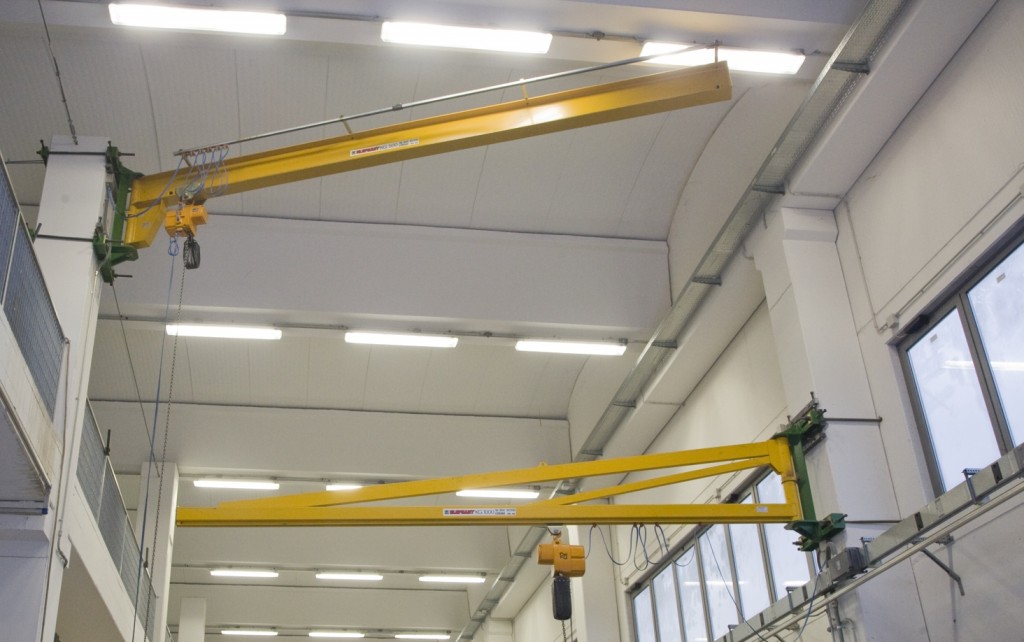
The jib crane is made up of an arm which carries out a determined rotation around a pin and thereby covers a semi-circular work area. They are the most cost-effective solution, simple and practical, and normally used to service single work stations.
The jib furthermore, presents an electric chain hoist which moves along the arm. The shift may be manual, electric or mechanical depending on the specific requirements and requests of the business.
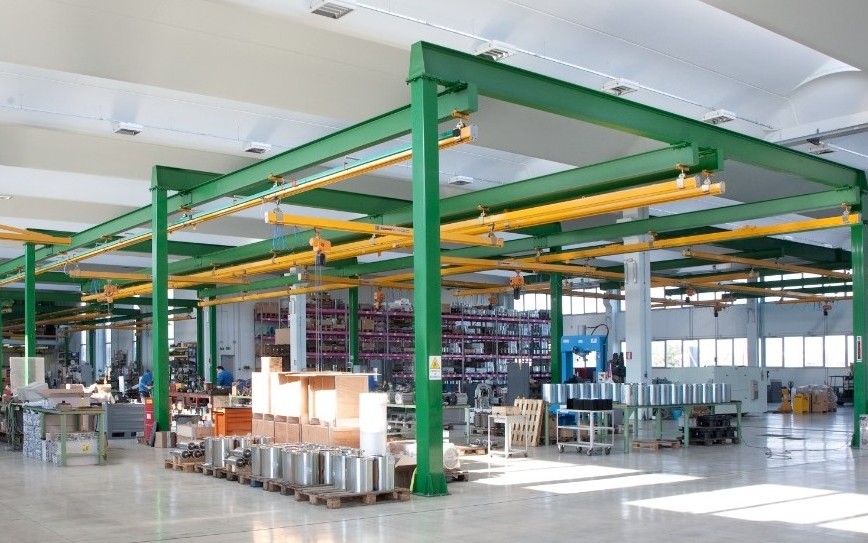
Compared with the jib crane, the suspended unit is designed to permit operators to move loads over a more extended work area of a rectangular shape. This is made up of two fixed tracks and a mobile bridge which, using wheels, moves over the rails themselves, thus allowing cover over the entire work area.
This unit is used in applications with loads which are not very heavy. Indeed, it has a maximum standard of capacity of 1000 kg and is therefore moved manually in the same manner as the chain hoist, which is moved manually by the operator along the bridge.
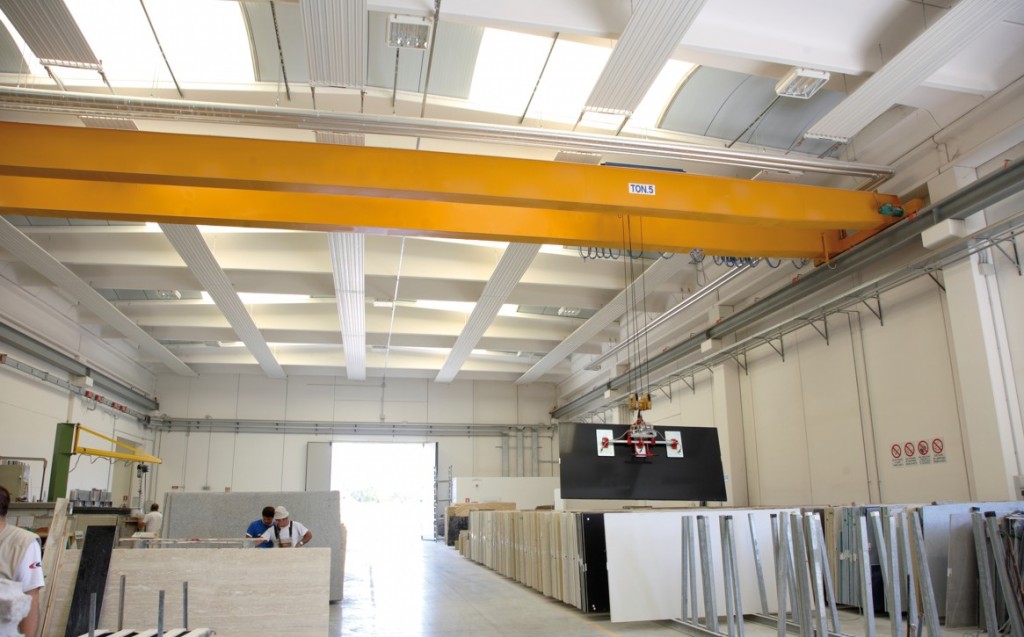
For heavy load lifting requirements, a bridge crane is usually required, electrically driven and without limits to its capacity.
This solution allows for making bridges up to 32 m range with a capacity of 60 tons.
Elephant is employed in the distribution of complete lifting systems, equipped with hoist and under-hook accessories. With regard to the offer of hoists, we can supply electrical, pneumatic, and manual chain or line hoists for satisfying all requests for load movements in an excellent manner.
Under-hook accessories are all those devices which are connected to the hoist hook to facilitate the lifting operations; a vast range of accessories come into this category and amongst those most in demand are sling bars, suction (or vacuum) lifters, suction cups and clamps. Other accessories available on request might be chains, trolleys, forks, belts, to quote only a few.
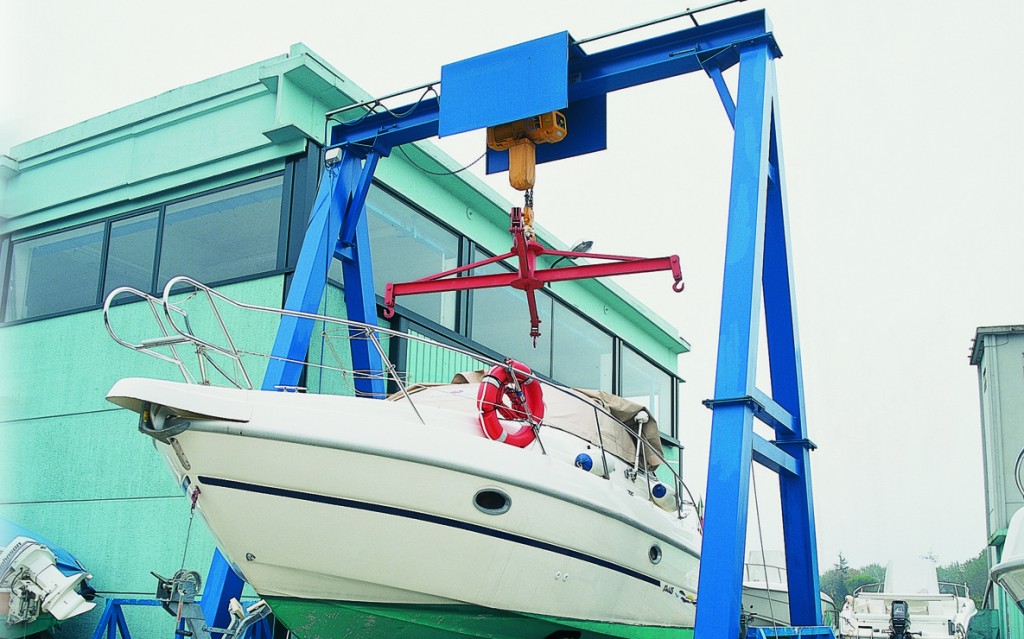
Lifting sling bars are made as fixed or adjustable single bars, H sling bars with adjustable or fixed hooks and X sling bars for big-bags. Other configurations are also possible, such as for example particular sling bars for hoisting boats.
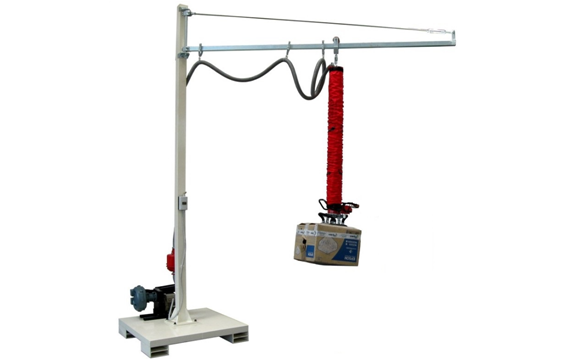
These are lifting systems based on vacuum technology much used for moving boxes, sacks, suitcases and many more. Being a system which combines speed, usefulness and flexibility, it is widely used in airports, sorting terminals, distribution centres and in industry generally.
All the units and lifting equipment created by Elephant conform with the following directives:
• 2006-42-CE – Machines Directive
• 2014-30-UE – European Directive for Electromagnetic Compatibility
• 2014-35-UE – European Directive on Low Voltages
Conformity with the requirements of the directives is demonstrated by compliance with the following harmonised technical Standards:
• UNI EN ISO 12100:2010 – For safety and evaluation of risks.
• UNI ISO/TR 14121-2:2013 – On methods of risk analysis.
• CEI EN 60204-1:2006 + A1:2009 – For the safety of machines’ electrical equipment.
Fill our information request form and we will contact you to provide you with a tailor-made project.